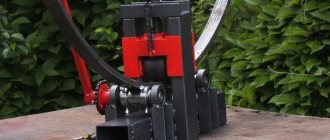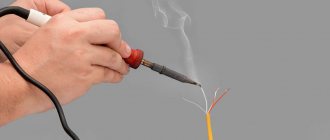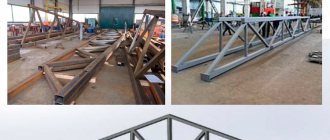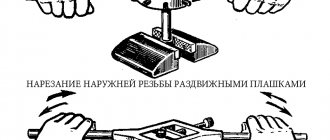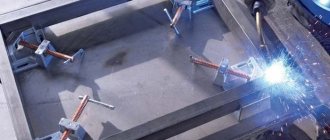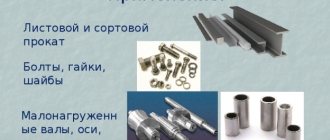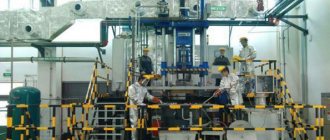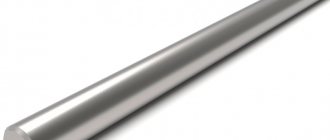What is it: types, classification and application
Rolled metal products are products made from different metals; they are produced at a certain temperature by rolling. It is used in mechanical engineering, construction and other industries. All kinds of materials are suitable for production (tin, copper, aluminum, stainless steel, alloy and black steel, etc.). The processing process is carried out in two stages:
- The first is the smelting of iron and cast iron.
- The second is the production of rolled products.
Upon completion of manufacturing and testing for compliance with established standards and norms, everything should be ready for sale in the country’s markets.
What is this more specifically?
Roughly speaking, this is a piece of alloy that can be an independent element. For example, a shed can be covered with a sheet of iron. But it is quite suitable as a raw material for the production of various products. for example, stamped body parts for cars are made from the same thin steel.
Long products - features, advantages and scope of use
The main feature is the correct geometric shape of the section. This group of rolled metal products includes:
- Circle.
The hot-rolled variety has a diameter from 5.0 to 270.0 mm, larger sizes are made to order. It is used in construction, mechanical engineering, for the production of fasteners, as a workpiece for cold processing. To improve the accuracy of parameters and surface quality, they are subjected to cold deformation.
The diameter of cold-rolled and drawn circles ranges from 3.0 to 100.0 mm, they are used without treatment and subjected to heat treatment, used in mechanical engineering, in the production of household appliances, and industrial equipment.
- Square.
Produced by hot rolling, side sizes range from 8.0 to 200.0 mm. Fasteners are made from the square and subjected to cold deformation. Calibrated products are characterized by precise dimensions and high-quality surface; side parameters range from 3.0 to 100.0 mm. Scope of application: automotive industry, equipment production, interior design.
- Hexagon.
Has a hexagonal cross section. Its size is equal to the diameter of the inscribed circle, the range is from 8.0 to 103.0 mm. Bolts, nuts and other fasteners are made from hexagons.
- Band.
In cross section it has the shape of a rectangle. It is made from different grades of steel and is used for the production of a variety of products - springs, decor, cutting tools. Width varies from 10.0 to 200.0 mm, thickness - from 4.0 to 80.0 mm.
The general advantageous characteristics of high-quality metal products are:
- Widely used in the form of blanks for forged and other products;
- resistance to corrosion;
- malleability to processing - cutting, forging, bending.
Main types
There are several most common ones. Classification is carried out according to several criteria. By type of finished products it can be:
- varietal;
- sheet;
- pipe;
- special (shaped).
Which happens depending on the production technology:
- cold-rolled (first, a workpiece is formed by etching, and then shaped using several shafts);
- hot rolled (the workpiece is formed by high heating of the alloy or steel).
Depending on the metal:
- black (cast iron);
- non-ferrous (alloys);
- stainless (not subject to corrosion).
Varieties and main types of rolled metal that are popular today
The following types are in greatest demand among consumers:
- Channels. They find their application in various fields of industry, for the construction of supporting and load-bearing structures. They are profiles with a U-shaped section.
- Beams. These products are in wide demand. After all, beams are used in a variety of construction works. They are made of low-alloy, carbon steel, in the form of horizontal or inclined bars.
- Fittings. Widely used for installation of reinforced concrete and load-bearing structures. This is a graded type made of steel. Has many shapes and sizes.
- Sheets. They are cold or hot rolled. Thickness and size may vary.
- Profiled sheeting. Used in the construction of walls, roofs, load-bearing structures. These are thin plates with certain stiffening ribs. During production there are several stages: cold rolling, galvanizing, priming.
- Pipes. Has many shapes and sizes. It is used in almost all areas of industry and life.
Equipment
To understand how different parts are made, you need to know what equipment is used during technological processes. Rolling is carried out on the following machines:
- Wire mechanisms. With their help, wire with a diameter of up to 10 mm is produced.
- Slabs - designed for processing long rectangular products.
- Bloomings - used in the manufacture of large square products. In addition to square sections, mechanisms can make blanks of various shapes.
- Pipe rolling are industrial machines that are used to create metal pipes of different diameters.
Before rolling begins, the metal is heated using industrial furnaces and fed through cutting shears to rotating shafts.
Varietal and shaped type: types of profiles
Rolled products are so called because the profiles are made on special machines. Represents: shafts, bushings, gears, and other products necessary in industry and transport construction. There is also sheet and shaped (special). The latter includes the following:
- hexagonal;
- square;
- rectangular;
- corners;
- channels;
- beams;
- rails.
Sheet metal: features
Today, its demand has increased in the markets. There are many ways to make it. Mainly made from alloys and non-ferrous metals. They are distinguished depending on the method of manufacturing the products. It is divided into hot-rolled and cold-drawn. The scope of application of the sheet depends on how it is made. Such products are in demand in construction and industrial production. Steel plates are in greatest demand. After all, they have a number of advantages:
- strength;
- long service life;
- resistance to temperature changes and mechanical influences from the outside;
- due to the galvanized surface - corrosion resistance.
The product is manufactured by changing the temperature regime. The profile is deformed under the influence of cold or hot temperature. Popular types include the following:
- Smooth. Always in demand. The range is wide, depending on the wall thickness.
- Galvanized. Among the positive characteristics, it is worth highlighting resistance to corrosion, high temperatures, and ultraviolet radiation. The price of the sheets is relatively low, and the service life is significant. They can be subjected to various treatments. Widely used in roofing, mechanical engineering and industry.
- Perforated. They have holes of various shapes (round, square, rectangular). Can be used as decoration for building facades or in construction.
- Stainless. The products have many advantages: they are not subject to corrosion, are resistant to high temperatures, are plastic, durable and visually attractive. They are used in almost all areas of life (railings, spans, commercial equipment).
- Decorative. Today they are produced in various shapes (corrugated, mirrored, polished, textured).
- Corrugated sheets. This is a special product with good steel thickness. They are used for wall cladding and for the construction of fences from the inside.
Basic parameters and pipe profiles
Classification occurs according to several criteria. They are divided depending on the diameter, size, material of manufacture, method of connection, type of insulation, cross-sectional profile.
Kinds
- Steel. The advantages of these products include a long service life (about 25 years) and reliability, the disadvantages are huge weight and lack of corrosion resistance. They are manufactured galvanized, welded, cold and hot rolled, cold drawn, profiled.
- Galvanized. They are able to withstand various temperature changes. Not subject to corrosive influences. The cost, of course, is much higher than usual, but the quality is several times better.
- Copper. The advantages are durability (service life reaches 100 years), resistance to corrosion and high temperatures. Cons: high price, low strength, difficult installation.
- Cast iron. Depending on the strength, there are black, gray and nodular graphite. They are reliable, corrosion-resistant, but not so durable and require installation costs.
- Metal-plastic - made of plastic and metal. Today they are the most popular on the market. They have many positive characteristics: price, quality, ease of installation. The disadvantages include poor resistance to temperature changes.
In addition, according to the method of application, pipes can be:
- electric welded;
- water and gas pipelines;
- casing;
- seamless;
- square or rectangular for making frames.
Steel channel: types of metal
This is a U-shaped profile. The structure can withstand large vertical loads. Construction and mechanical engineering cannot be done without them. In any industry it is necessary to support and reinforce various structures. Divided:
- hot rolled parallel;
- with sloped internal edges;
- ordinary accuracy (B);
- increased rolling (B);
- bent.
They will be useful in any field of activity. The scope of application depends on their size. 10 is in demand when installing columns, walls, and rod structures. 14 is used to support load-bearing elements. 20 – for strengthening bridges, reinforcing floors of multi-story buildings.
Rolled metal: areas and applications
In the modern world there are in almost every area of construction, industry and economic activity. For example, roll is necessary for the construction of high-rise buildings, industrial complexes, as well as for the production of machine tools, cars, airplanes, and individual furniture.
Recently, decorative has become increasingly popular. Compositions are made from it, buildings, furniture, and various structures are decorated with it. Products made of ferrous and non-ferrous metals are no less in demand. They are used as decoration not only in private households, but also in offices and parks.
Products are also necessary for fastening rails, preventing soil sliding (for this there is a special type of rolled product - shunt), water, heat and gas supply to residential buildings and non-residential buildings. Today, not a single sector of human life can do without them.
Application of rolled metal products
No matter what industry we are talking about, each of them today cannot do without the use of long rolled metal products. The largest volumes of metal blanks are used in construction, mechanical engineering and shipbuilding.
Civil, commercial, industrial construction
Long lengths are widely used to enhance the strength of critical elements that bear a high proportion of dynamic loads, as well as to create decorative and fencing elements. Rolled metal used for decorative purposes has a lightweight profile. Ventilation, water supply and heating systems, fastenings, etc. are made from metal blanks. In road construction one cannot do without metal rails and fences.
Mechanical engineering, instrument making
Long products are necessary for the manufacture of numerous parts and assemblies. Elements of any technology are made from it. Profiled long products are used to produce parts that increase the strength of load-bearing structures. The main share of long-rolled metal products consumed in the world is accounted for by the mechanical engineering industry.
Shipbuilding
In this area, rolled metal is of utmost importance. Long products perform the function of reinforcing elements, effectively coping with dynamic loads.
What is most valued on the market
In the world of modern technology, the counter is overflowing with an abundance of parts, but the most in demand are:
- sheet metals;
- beams;
- pipes;
- corners.
The buyer always carefully chooses the manufacturer. After all, price, quality and warranty periods depend on the reputation of the enterprise. Products from China are not always durable; they attract some customers only with a price (below the market price). But after purchasing, you may encounter the problem of low-quality goods and lost money.
What to do to buy high-quality rolled metal of the correct classification
It is necessary to contact trusted companies.
Products must comply with all established norms, standards and GOST requirements. All of them are certified according to the following parameters:
- size, length, assortment;
- chemical composition of steel, alloys;
- compliance with technical conditions during production.
So, what is rolled metal, types of rolled metal, their grade classification, photos and pictures you found in our article.
Contact Rosta LLC if you decide to buy devices for industrial use. We have manual and semi-automatic band saws in stock and on order, as well as pendulum, vertical and two-post units. To clarify the information you are interested in, contact the managers by phone;; 8 (800) 707-53-38. They will answer all your questions.
Hot rolled sheet - characteristics according to GOST
Hot rolling is the process of deforming a workpiece at forging temperature. The main volume of rolled steel is obtained in this way. Hot-rolled sheets can serve as rolled sheets in the production of cold-rolled sheets or be used for the manufacture of structures and products for various purposes. The thickness of hot-rolled sheets can be 0.4-160 mm.
Assortment of hot-rolled sheets according to GOST standards
These metal products are manufactured in accordance with various regulatory documents.
- Hot-rolled thick plates made of carbon steel of ordinary quality, the thickness of which is 4-160 mm, are produced in accordance with the technical conditions set out in GOST 14637-89.
- Thin hot-rolled steel (up to 3.9 mm) is produced in accordance with GOST 16523-97.
- Thick-sheet hot-rolled products with a thickness of 4-160 mm from carbon, low-alloy and alloy steels, used in the production of vessels, boilers and furnaces, are manufactured in accordance with GOST 5520-79.
- Sheets of normal and high strength, 4-60 mm thick, made of carbon steels and grades with a high manganese content, manufactured in accordance with GOST 5521-93. The products are used in shipbuilding.
- Thick-rolled steel for the manufacture of bridges of conventional and northern design from low-alloy grades is regulated by GOST 6713-91. Alloy steel products used in the construction of bridge structures must comply with GOST R 55374-2012.
Dimensions of hot-rolled sheets in accordance with GOST 19903-2015
GOST 19903-2015 regulates the range of hot-rolled sheets with a thickness of 0.4-160 mm. Metal products are produced in sheets or rolls (thickness 1.2-12.0 mm). For production, unalloyed steel of ordinary quality and low alloy is used.
Rolled sheets are produced with cut and uncut edges, in terms of rolling accuracy - increased and normal (for rolled products up to 12 mm thick), in terms of flatness - normal, improved, high, especially high. A roll may contain no more than two pieces, individually or connected by welding. The lengths of the pieces must have a ratio of at least 1:5.
The number of pieces or the ratio of their lengths may be different, but only by agreement with the customer.
Sheet sizes:
- width – 500-3800 mm;
- length – 710-12000 mm.
Methods for calculating the mass of rolled sheets
The most convenient option for determining the mass of a hot-rolled sheet is to use an online calculator, which takes into account its dimensions and the exact value of the density of a particular steel grade.
The mass of a unit of sheet metal can be calculated using a simple formula.
M = H*B*L*7.85 , where:
- M – mass, kg;
- H – thickness, mm,
- B – width, m,
- L – length, m,
- 7.85 kg/dm3 is the average density of steel, corresponding to the weight of a sheet with a thickness of 1 mm and an area of 1 m2.
The weight of hot-rolled sheet can also be found using a table that indicates the weight of 1 m2 of products of a certain thickness. The values indicated in the table are for reference.
| Thickness, mm | Weight, kg | Thickness, mm | Weight, kg | Thickness, mm | Weight, kg | Thickness, mm | Weight, kg | Thickness, mm | Weight, kg |
| 0,4 | 3,14 | 4,0 | 31,4 | 10,0 | 78,5 | 36,0 | 282,6 | 70,0 | 549,5 |
| 0,6 | 4,7 | 4,5 | 35,33 | 12,0 | 94,2 | 40,0 | 314,0 | 80,0 | 628,0 |
| 0,8 | 6,28 | 5,0 | 39,25 | 16,0 | 125,6 | 42,0 | 329,7 | 90,0 | 706,5 |
| 1,0 | 7,85 | 5,5 | 43,18 | 20,0 | 157,0 | 48,0 | 376,8 | 100,0 | 785,0 |
| 1,2 | 9,42 | 6,0 | 47,1 | 24,0 | 188,4 | 50,0 | 392,5 | 110,0 | 863,5 |
| 1,5 | 11,78 | 6,5 | 51,03 | 26,0 | 204,1 | 52,0 | 408,2 | 120,0 | 942,0 |
| 2,0 | 15,7 | 7,0 | 54,95 | 28,0 | 219,8 | 54,0 | 423,9 | 140,0 | 1099,0 |
| 2,5 | 19,63 | 7,5 | 56,24 | 30,0 | 235,5 | 56,0 | 439,6 | 150,0 | 1177,5 |
| 3,0 | 23,55 | 8,0 | 62,8 | 32,0 | 251,2 | 60,0 | 471,0 | 160,0 | 1256,0 |
